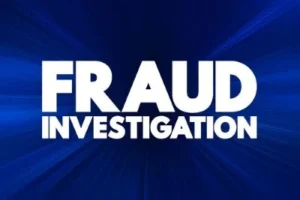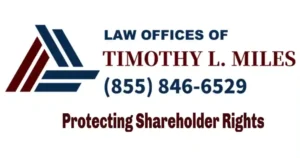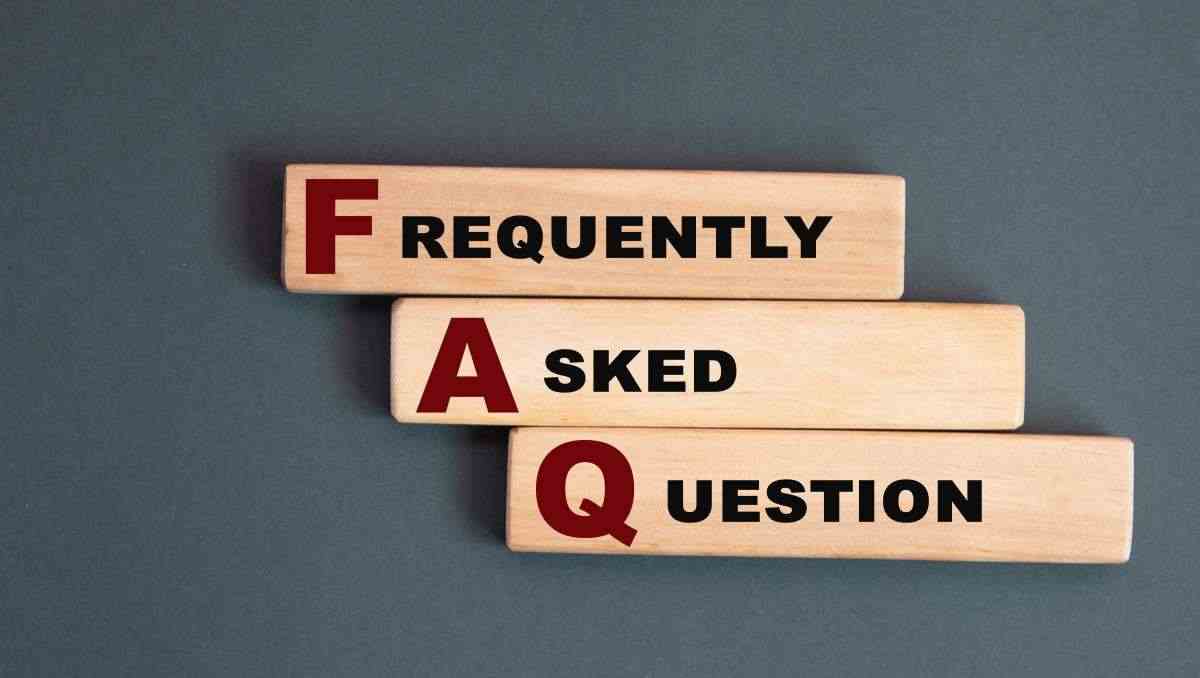Introduction to the Microstrategy Class Action Lawsuit
The MicroStrategy class action lawsuit seeks to represent purchasers or acquirers of MicroStrategy Incorporated d/b/a Strategy (NASDAQ: MSTR; STRK; STRF) securities between April 30, 2024 and April 4, 2025, inclusive (the “Class Period”). Captioned Hamza v. MicroStrategy Incorporated d/b/a Strategy, No. 25-cv-00861 (E.D. Va.), the MicroStrategy class action lawsuit charges MicroStrategy and certain of MicroStrategy’s top executives with violations of the Securities Exchange Act of 1934.
If you suffered substantial losses and wish to serve as lead plaintiff of the MicroStrategy lawsuit or just have general questions about you rights as a shareholder, please contact attorney Timothy L. Miles of the Law Offices of Timothy L. Miles, at no cost, by calling 855/846-6529 or via e-mail at tmiles@timmileslaw.com.
Lead plaintiff motions for the MicroStrateg lawsuit must be filed with the court no later than July 15, 2025.
1. What Are the Allegations in the MicroStrategy Class Action Lawsuit?
Since 2020, MicroStrategy has increasingly focused on purchasing and holding bitcoin, a type of crypto-currency, as a long-term business strategy. According to the complaint, on January 1, 2025, MicroStrategy adopted the Financial Accounting Standards Board’s Accounting Standards Update No. 2023-08, Intangibles – Goodwill and Other – Crypto Assets (Subtopic 350-60): Accounting for and Disclosure of Crypto Assets (“ASU 2023-08”), which requires publicly traded companies to measure their crypto assets at fair value in their financial statements, with gains and losses from changes in the fair value of those assets recognized in net income in each reporting period.

The MicroStrateg lawsuit alleges that defendants throughout the Class Period made false and/or misleading statements and/or failed to disclose that:
- The anticipated profitability of MicroStrategy’s bitcoin-focused investment strategy and treasury operations was overstated; and
- The various risks associated with bitcoin’s volatility and the magnitude of losses MicroStrategy could recognize on the value of its digital assets following its adoption of ASU 2023-08 were understated.
The MicroStrateg class action lawsuit further alleges that on April 7, 2025, MicroStrategy disclosed that, following its adoption of ASU 2023-08, it recognized a $5.91 billion unrealized loss on its digital assets for the first quarter of 2025, which was expected to result in a net loss for the quarter.
As a result, MicroStrategy warned investors that “[w]e may not be able to regain profitability in future periods, particularly if we incur significant unrealized losses related to our digital assets,” according to the MicroStrateg lawsuit.
The MicroStrateg class action lawsuit alleges that on this news, the price of MicroStrategy stock fell nearly 9%.
2. What Is the the Private Securities Litigation Reform Act?
The Private Securities Litigation Reform Act (PSLRA) of 1995 is a significant piece of legislation that was enacted to address abuses in securities class action lawsuits. The PSLRA was designed to curb frivolous lawsuits and ensure that plaintiffs possess solid evidence before bringing their claims forward and will apply to the MicroStrateg lawsuit..
One of the fundamental aspects of the PSLRA is the imposition of stringent pleading standards, which require plaintiffs to specify each statement alleged to be misleading and the reasons why it is considered misleading. This measure aims to prevent baseless allegations and encourage more diligent and thorough investigations before filing lawsuits and will be in play in the MicroStrateg lawsuit.

An example of a case impacted by the PSLRA is the MicroStrateg class action lawsuit. In this lawsuit, shareholders accused MicroStrategy of making false statements about its financial health, leading to inflated stock prices. The PSLRA’s heightened standards meant that plaintiffs have to provide detailed evidence and demonstrate a strong inference of the defendants’ intent to deceive.
This requirement significantly raised the bar for the plaintiffs, as will be seen in the MicroStrateg lawsuit, ensuring that only well-substantiated claims could proceed, thus preventing the courts from being overwhelmed by meritless suits.
Moreover, the PSLRA introduced provisions such as the mandatory stay of discovery during the motion to dismiss phase, limiting the potential for costly and extensive discovery processes until the court has determined whether the allegations have sufficient merit to proceed.
These reforms were aimed at reducing litigation costs for companies and protecting them from unwarranted legal burdens.
Overall, the PSLRA Act has played a crucial role in refining and improving the framework for securities class action lawsuits. By demanding higher standards of proof and implementing procedural safeguards, it has helped balance the interests of shareholders seeking justice against corporate misconduct with those of companies seeking protection from baseless legal claims.
The MicroStrateg class action lawsuit exemplifies how the PSLRA has reshaped the litigation landscape, emphasizing the need for rigorous evidence and substantiation in securities fraud cases.
3. How Does the Court Determine the Lead Plaintiff Under the PSLRA?
Under the Private Securities Litigation Reform Act (PSLRA), the determination of a lead plaintiff in securities class action lawsuits involves a structured process designed to ensure that the most capable party oversees the litigation. This process is pivotal in cases such as the MicroStrategy lawsuit, where the stakes are high for both plaintiffs and defendants.
The process begins by the plaintiff who filed the first complaint publishing a notice of the lawsuit so that potential plaintiffs are informed and can put forth their interest in serving as the lead plaintiff. From there, the court reviews all applicants to identify the party or parties with the largest financial interest in the relief sought by the class in the MicroStrateg lawsuit.

In the context of the MicroStrategy lawsuit, applicants who have suffered substantial financial losses due to alleged securities fraud are likely contenders for lead plaintiff. The PSLRA mandates that these individuals or entities must also meet certain criteria, including adequacy and typicality, which means they must be capable of fairly and adequately protecting the interests of the class and their claims must be typical of those of the class members. ‘
This selection process is designed to ensure that the litigation is driven by plaintiffs who have significant stakes in its outcome and possess the requisite experience and resources to manage complex securities litigation such as the MicroStrateg lawsuit.
Additionally, courts often consider other factors such as the ability of the lead plaintiff to control counsel, their commitment to the proceedings, and their understanding of fiduciary duties to other class members. In high-profile cases like the MicroStrategy lawsuit, these considerations are crucial for maintaining a well-organized and effective legal strategy that stands a strong chance against corporate defendants.
Ultimately, through this rigorous selection process under the PSLRA, courts aim to appoint a lead plaintiff who can steer the class action towards a successful resolution while safeguarding the interests of all class members involved.
4. When Is the Lead Plaintiff Deadline in the MicroStrategy Class Action Lawsuit?
Lead plaintiff motions for the MicroStrateg class action lawsuit must be filed with the court no later than July 15, 2025. When a securities class action is filed:
- The person who files the first complaint is required to publish a notice announcing the filing.
- Anyone who wants to be the lead plaintiff on behalf of the class in the MicroStrateg lawsuit must thereafter file a motion to be appointed as lead plaintiff(s) no later than 60 days after the notice was published.
5. What Are the Eligibility Criteria for Lead Plaintiff Appointment in the MicroStrategy Class Action Lawsuit?
To be eligible for appointment as the lead plaintiff in the MicroStrateg class action lawsuit, an investor must meet the following criteria:
- Securities Acquisition: The investor must have purchased or acquired MicroStrategy Incorporated d/b/a Strategy (NASDAQ: MSTR; STRK; STRF) securities between April 30, 2024 and April 4, 2025,
- Financial Losses: The investor must have suffered financial losses as a direct result of the alleged securities fraud perpetrated by MicroStrategy and its executives.
- Typicality and Adequacy: The investor’s legal claims must be typical of those asserted on behalf of the class, and they must demonstrate their ability to adequately represent the interests of the entire class through experience, resources, and the absence of conflicts of interest.
It is crucial to note that both domestic and international investors who meet these criteria are eligible to seek appointment as the lead plaintiff in the class action lawsuit, as courts have consistently recognized the rights of non-U.S. investors in securities class actions.
6. What Are the Legal Requirements for Prevailing in the MicroStrategy Class Action Lawsuit?
- Material Misrepresentation or Omission
- Scienter
- Connection to Securities Transaction
- Reliance
- Economic Loss
- Loss Causation
7. What Are the Reasons Behind the MicroStrategy Lawsuit?
The reasons behind the MicroStrateg lawsuit are rooted in allegations of corporate misconduct and misrepresentation. These claims suggest that MicroStrategy may have engaged in activities or made statements that misled investors about the company’s financial health or prospects. Understanding these allegations is vital for assessing the potential outcomes of the lawsuit.

The lawsuit’s foundation lies in the assertion that investors relied on inaccurate or misleading information when making investment decisions. Such claims, if proven, can have significant legal and financial implications for the company and its stakeholders. Investors need to understand the basis of these allegations to evaluate the potential risks and rewards associated with the MicroStrateg lawsuit.
By comprehending the reasons behind the MicroStrateg lawsuit, you can better assess how it might affect your investments in MicroStrategy. Whether the claims involve financial statements, business practices, or other corporate actions, understanding the lawsuit’s basis will help you make informed decisions about your involvement and potential next steps.
8. Who is Affected by the MicroStrategy Class Action Lawsuit?
The MicroStrateg class action lawsuit primarily affects investors who purchased shares during the period in which the alleged misconduct occurred. If you invested in MicroStrategy. during this time, you could be part of the affected class and eligible for compensation if the lawsuit succeeds.
Identifying whether you are part of the affected group is crucial for understanding your rights and potential benefits. The MicroStrateg class action lawsuit may involve a specific time frame and set of circumstances that define the class of investors who can participate. Knowing these details will help you determine your eligibility and take appropriate action.
In addition to investors, the MicroStrateg class action lawsuit can also impact the company’s executives, board members, and other stakeholders. The outcome of the lawsuit could influence MicroStrategy’s reputation, financial stability, and future operations, affecting all parties associated with the company. Staying informed about the lawsuit’s progress is essential for anyone connected to MicroStrategy.
Contact Timothy L. Miles Today About a MicroStrategy Class Action Lawsuit
If you suffered losses in MicroStrategy stock, call us today for a free case evaluation about an MicroStrateg class action lawsuit. 855-846-6529 or tmiles@timmileslaw.com (24/7/365).
Timothy L. Miles, Esq.
Law Offices of Timothy L. Miles
Tapestry at Brentwood Town Center
300 Centerview Dr. #247
Mailbox #1091
Brentwood,TN 37027
Phone: (855) Tim-MLaw (855-846-6529)
Email: tmiles@timmileslaw.com
Website: www.classactionlawyertn.com
Facebook Linkedin Pinterest youtube






